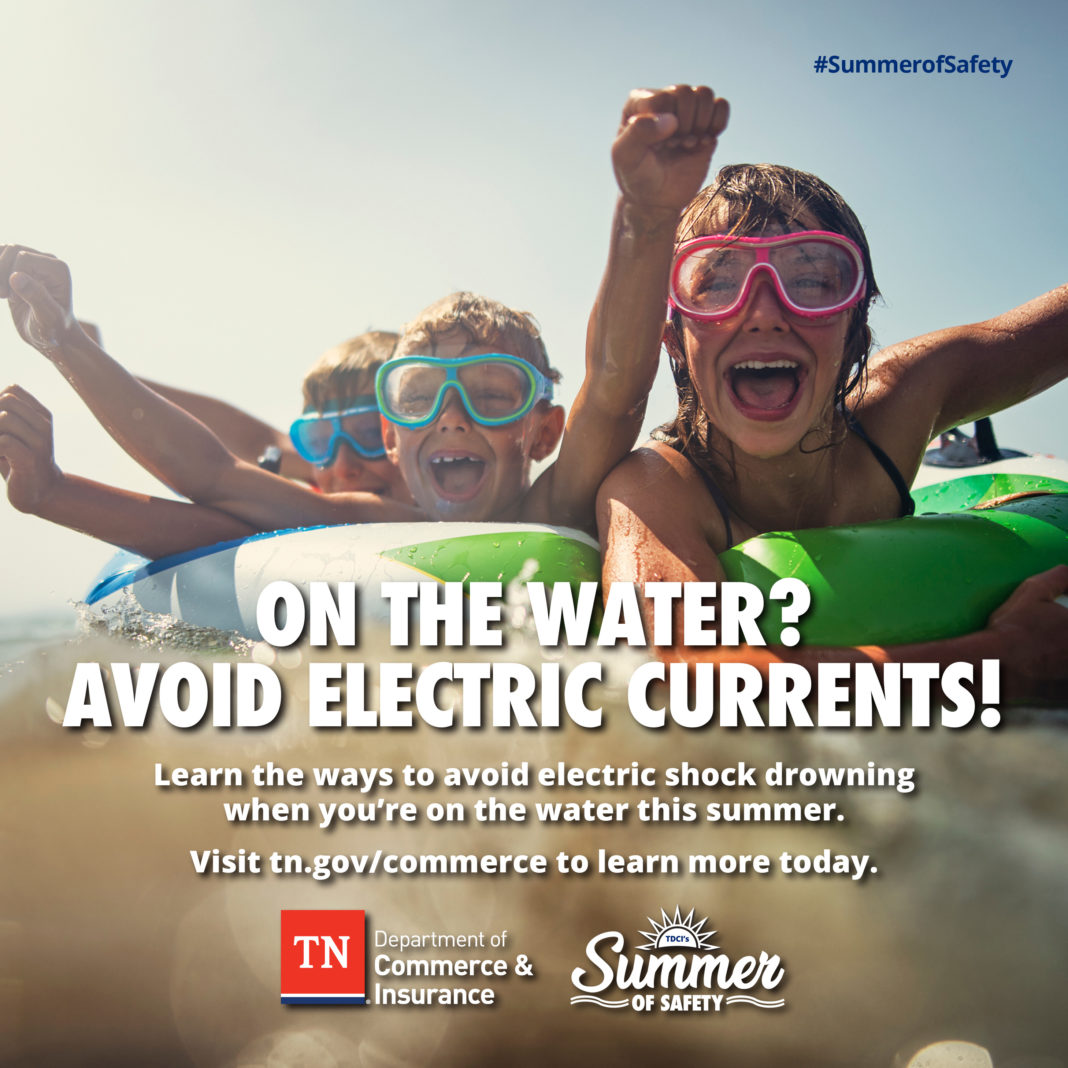NASHVILLE — The Volunteer State’s beautiful lakes, rivers and waterways are the perfect place to beat the heat this summer.
To help keep Tennesseans safe while on the water, the Tennessee State Fire Marshal’s Office (“SFMO”) reminds consumers to learn more about potential hazards that could lead to electric shock drowning.
Electric shock drowning occurs when a swimmer unknowingly enters water that has been electrified by a nearby power source such as a boat or a marina. While swimming in the electrified water, the swimmer is paralyzed by the electric current in the water before drowning.
To reduce the risk of electric shock drowning deaths in Tennessee, the Tennessee General Assembly passed the Noah Dean and Nate Act, which was named after Noah Dean Winstead, 10, and Nate Lynam, 11, who died on July 4, 2012, after being electrocuted while swimming at the Cherokee Lake marina. The Act, which was passed in 2014, requires that all of Tennessee’s public marinas and docks be inspected by the SFMO. As part of the legislation, marina and boat dock operators must comply with equipment requirements preventing possible electrical shocks and electrocution.
To aid boaters, the SFMO posts a list of inspections of Tennessee public marinas, harbors and docks which can be found here. By law, marina inspections by the SFMO occur every 5 years.
“Ahead of the Fourth of July holiday and all summer long, I urge my fellow Tennesseans to focus on safety every time they are on the water and to always be aware of the risks that can arise with electric shock drowning,” said Tennessee Department of Commerce & Insurance Commissioner and State Fire Marshal Carter Lawrence. “Our team focuses on consumer safety through responsible regulation such as the marina inspection process. The marina inspection program shows our commitment to Tennesseans by providing important information to them in order to help ensure their safety.”
To help boaters and swimmers avoid electric shock drowning incidents, the SFMO created this video to highlight the importance of safety when visiting a dock or marina.
As a reminder for families and boat owners, the SFMO shares these tips to help avoid electric shock drowning.
- Never swim within 100 yards of any freshwater marina or boatyard.
- If you own a boat, have your boat tested once a year to see if it is leaking electricity, or buy a clamp meter and test it yourself.
- If you find any problems, have your boat inspected by a qualified electrician trained to American Boat and Yacht Council (ABYC) standards. Have a qualified ABYC electrician install an Equipment Leakage Circuit Interrupter (ELCI) on your boat or use an ELCI in the shore power cord. As an alternative, install an isolation transformer on the boat.
- Test the ELCI at least once a month or per the manufacturer’s specifications.
- Never use common household extension cords for providing shore power to your boat. Use, and encourage other boaters to use, shore power cords built to Underwriters Laboratories (UL) standards.
- Never dive on your boat to work on underwater fittings when the boat is plugged in to shore power.
- If you’re in the water and feel tingling or shocks, do not follow your instinct to swim toward the dock. Instead, swim away 100 yards or more away from the dock.
- If you feel tingling in the water, let everyone around you know what is occurring so they will understand the danger and react appropriately.
- Once ashore, alert the dock or marina owner and tell them to shut the power off to the dock until they locate the problem and correct it.
- If you must rescue an electric shock drowning victim, fight the instinct to enter the water. Many rescuers have died trying to help electric shock drowning victims.
- Call for help. Use 9-1-1 or VHF Channel 16 as appropriate.
- Turn off the shore power connection at the meter base and/or unplug shore power cords.
- Get the victim out of the water.
- If the person is not breathing or you cannot find a pulse, perform CPR until the emergency responders arrive.









